The LeRoy Neiman Center’s Student Union Gallery on the campus of the School of the Art Institute of Chicago (SAIC) is currently showing an exhibition of work by students in its new and relatively unknown Low-residency MFA program. Swinging Mind, Unfolded Senses is influenced by Walter Pater’s novel Marius the Epicurean: His Sensations and Ideas, with works created to “imitate experience that uses the senses as a method of research,” according to promotional materials.
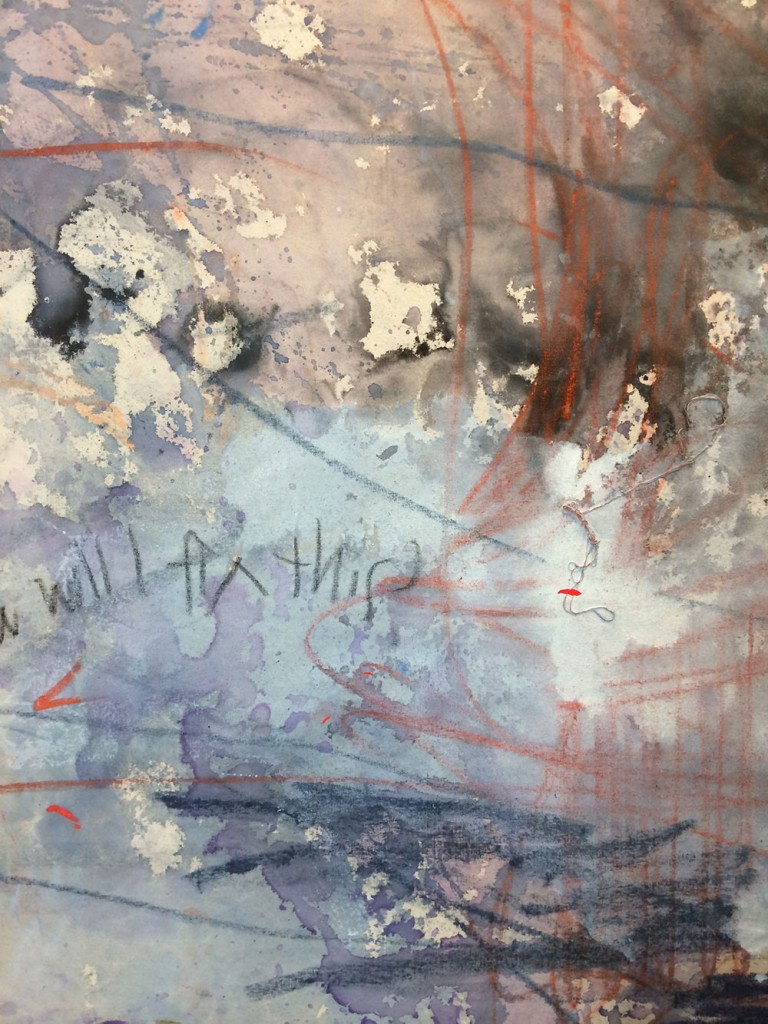
The audience is greeted outside the exhibition with an introductory piece by Caroline Wright that acts as an abstracted hanging scroll evolving from patches of gray to blue. Its vertical nature pulls the viewer’s eyes in a linear fashion along the wall, leaving it to rest on the moment when the wall hits the floor as the emerging blue stutters with the change of surface. The artist continues exploring the scroll as a reactive sculptural piece with her hanging works inside the gallery.
In the gallery’s small space, exhibitions are usually without a viewing order, but in this case, Mohamad Kanaan’s White Mornings establishes itself as the initial interest in the space. The artist brings Muslim burial rituals into an interactive sculpture featuring a chair with an attached burial shroud. The physical encounter with death is pushed further as scenes of Kanaan mourning a body are displayed on a screen.

On another screen Jacqueline Weaver’s Gaza is a 3-minute video using sound and vision to comment on the delivery of information. Through headphones, the viewer is immersed in a café setting with clanking glass and chattering voices while myriad bombs drop in the background. With each bomb, a new color liquid is introduced into the video’s bath of murky water. With the auditory familiarity of a human setting and the visually foreign setting of liquid moving to the sound of bombs, Weaver embodies the sensory motif of the exhibition.
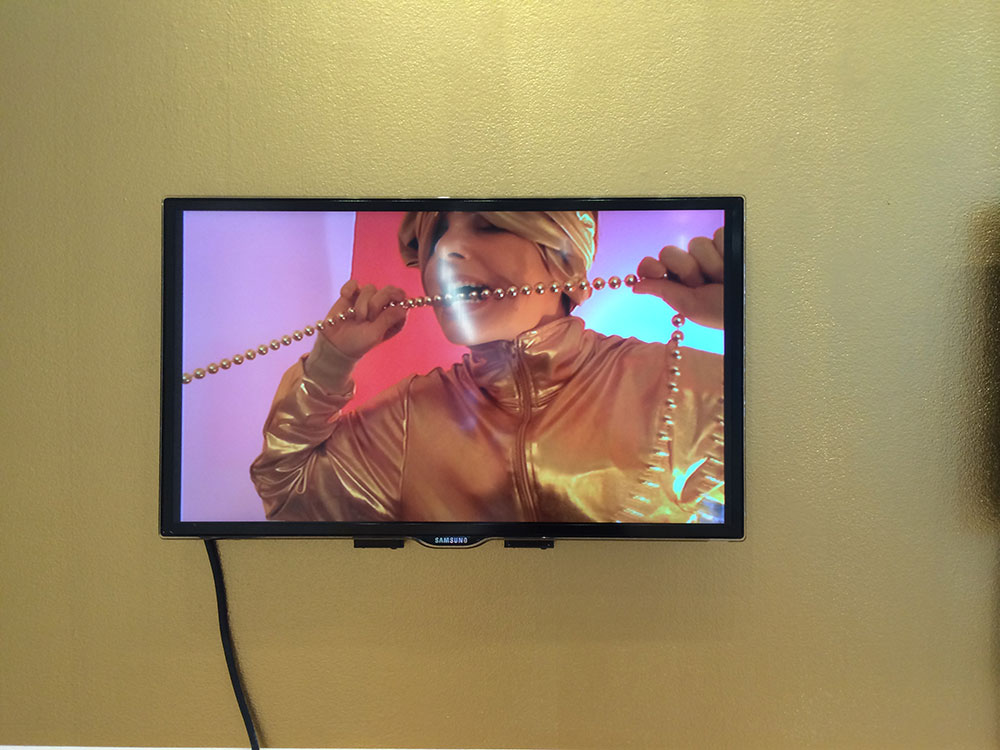
At the back of the gallery, television screens display the performative experiments of Kate Watson-Wallace. Perform me is an improvisational performance in collaboration with artists Sandrine Schaefer that looks at the audience and performer binary from a sensory standpoint. Watson-Wallace captures these abstracted memories by sleeping on fur beds, wrapping bodies in gold fringe, and biting on necklaces. The compilation of screens and actions results in an overwhelming feeling of uncomfortable nostalgia.
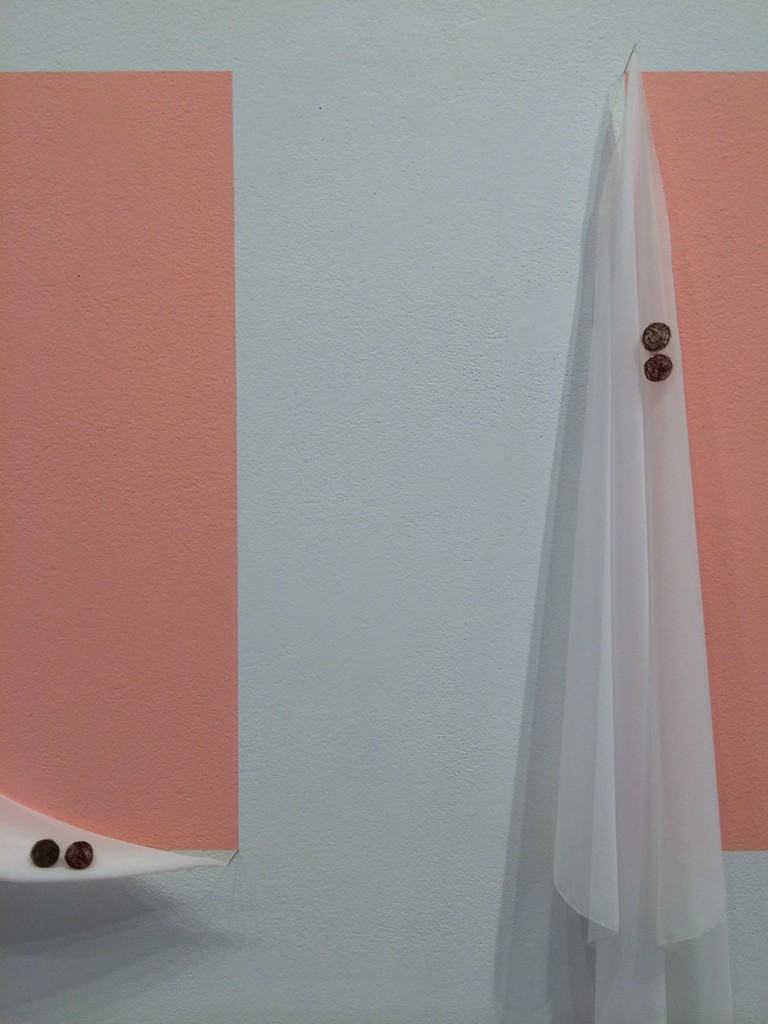
Between Gaza and Gold is the realm of Carly Zufelt’s delicate fiber work, which explores the ideas of intimacy and loss with spheres of human hair resting on two transparent sheets of fabric hung against pink color fields. Zufelt continues the motif of hair with blue dyed animal hair alongside a gray dyed bed sheet. With their gentle nature and intellectual approach to the idea of mourning, these pieces inhabit a realm separate from the more aggressive sensory works in the exhibition.
Sandrine Schaefer’s Displaced/Display seems not to belong to any part of the gallery. The piece relies entirely on a group of individuals that the artist has allowed to move relics and the plinths on which they originally rested. The work embraces the relationship between people and the objects that they must move. The chosen individuals have evidently attributed meaning and purpose to these objects as wooden sticks and chilies are placed into intertwining piles where they are forced to interact with each other. Displaced/Displayed presents the audience with a creation formed from multiple individual’s sensory reactions.
The Low-Residency MFA Program is in its second year at SAIC, and the artists in the program have remained outside of the larger SAIC community, largely because they spend only three weeks each summer on campus. This exhibition is a step in the right direction for the program to integrate its students further into the SAIC community.
As a summer exhibition, Swinging Mind, Unfolded Senses brings the Low-residency MFA program a more diverse audience than it would during the academic year. Not only do the undergraduates, graduates, and faculty who stay on campus for the summer visit the gallery, so do students in the continuing studies program, which includes hundreds of elementary students, middle school students, and high school students who visit the gallery as one of their first introductions to contemporary art. This exhibition is a cohesive and successful exploration of the senses and mind that gives the Lo-residency MFA Program more exposure to the SAIC community, and vice-versa, and beneficially influences young artistic minds.
Photos by Gabrielle Egnatar



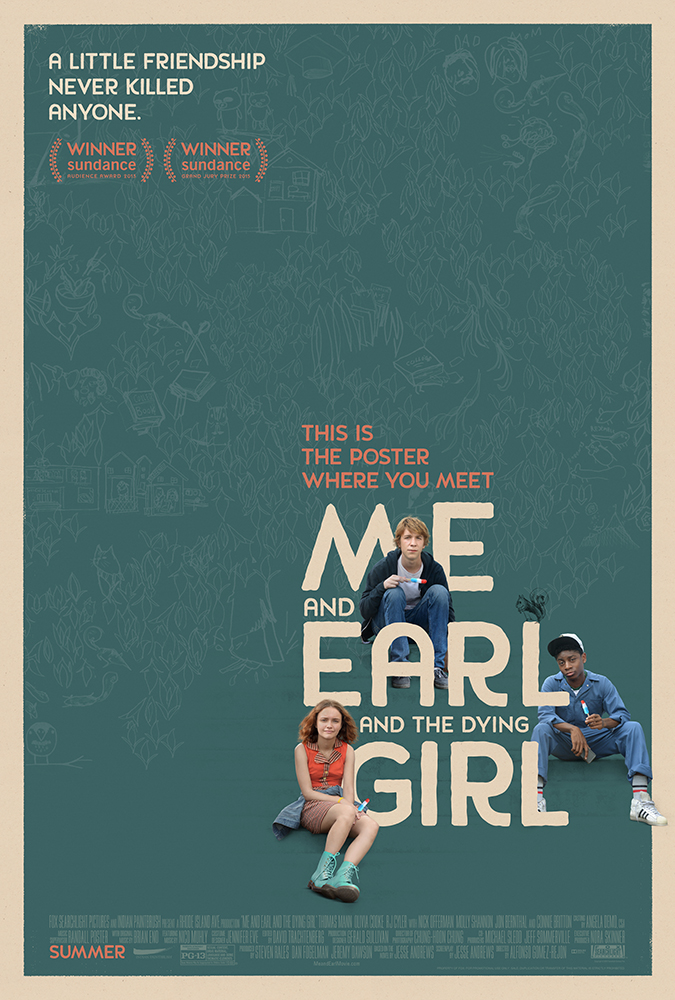
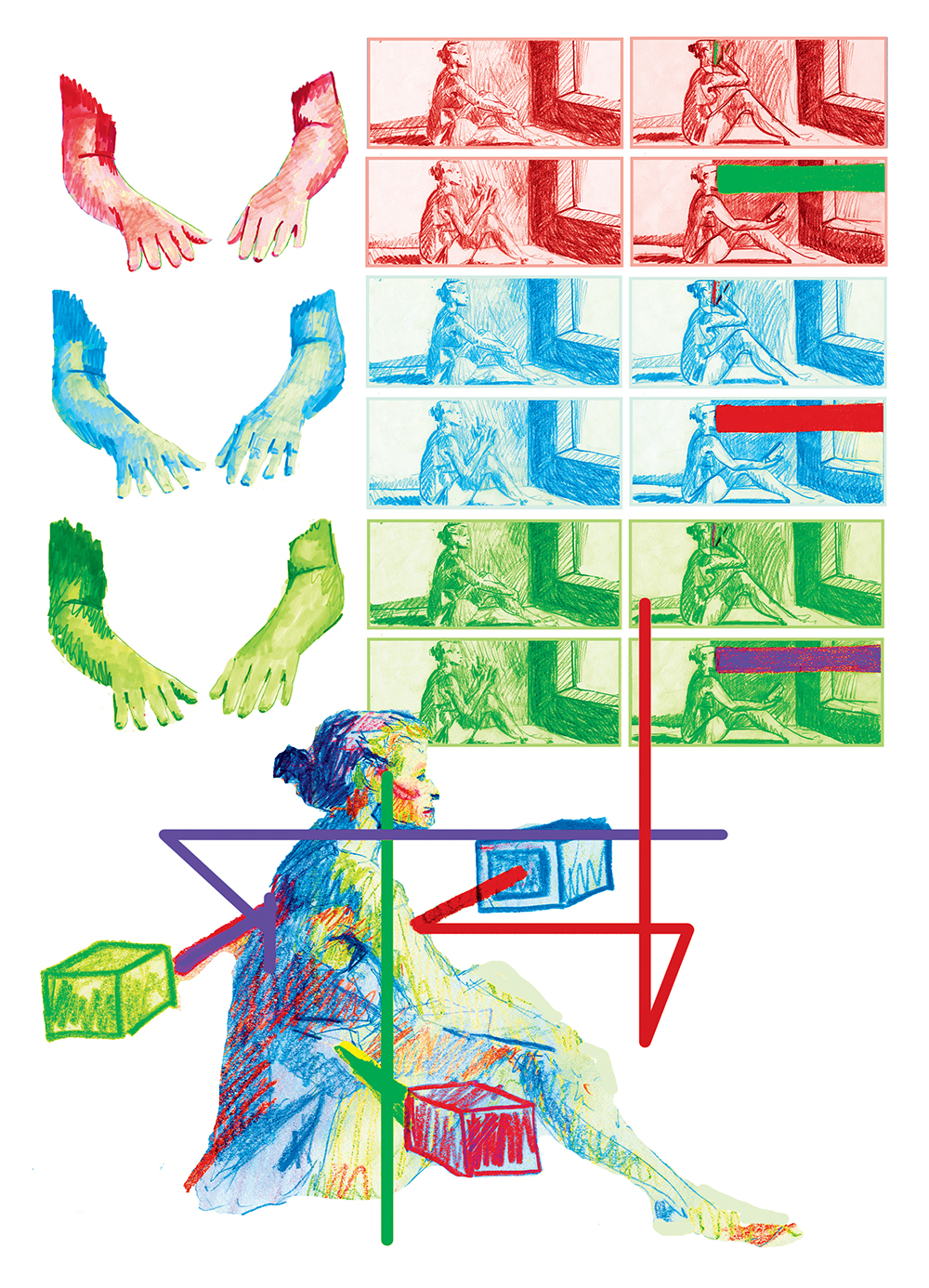



Who is your fact checker? Several inappropriate and blatant errors. May want to take down until it is fixed.